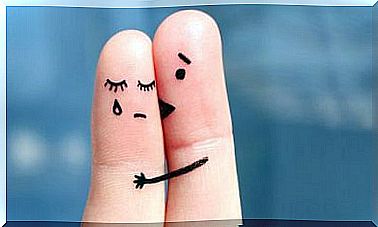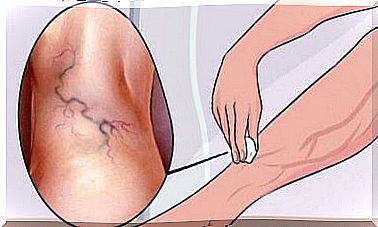Cognitive Therapy Based On Mindfulness

Cognitive therapy based on mindfulness is a type of psychotherapy used for patients with depressive disorders. It integrates aspects of cognitive behavioral therapy for depression with the mindfulness-based stress reduction program.
What is it really? When is it recommended?
First of all, keep in mind that it includes two therapeutic approaches of similar origin, but with some differences. To better understand what they are about, we will review the characteristics of each one.
Cognitive behavioral therapy and mindfulness
First, cognitive behavioral therapy belongs to the category of “second wave therapies”. Its approach focuses on the role of cognition in the root and the maintenance of problems.
One of its most prominent exponents, psychiatrist Aaron T. Beck, explains depression from the “cognitive triad”. That is, a patient has a negative view of himself, the facts, and the future.
Therefore, depressive symptoms are a consequence of negative thought patterns. In this regard , cognitive therapy seeks to intervene in these patterns (cognitive disorders) to replace them with healthier and more adaptive patterns.
Meanwhile, third-generation therapies focus on contextual functions and functional analysis of behavior. That is, the context in which the behavior works, to what and how to adapt it to something healthier, instead of eliminating it.
Mindfulness is part of this classification, and it’s just how its creator, Jon Kabat Zinn, interprets it. It is about focusing on the present moment (here and now) with experiences as they appear, without judging them.

Application of mindfulness
One can apply mindfulness in different situations which are not necessarily linked to diseases. Specifically, it is useful for, among other things, depression, generalized anxiety, phobias and eating disorders. There is also evidence that it contributes to the treatment of addiction and coercion.
Its scope is quite wide and is actually suitable for both adults and children. As it works with relaxation, meditation and conscious breathing, it can help improve performance, concentration and the ability to cope with difficult situations.
It helps with the following, among other things:
- Distance to negative thoughts.
- Focus on self-compassion.
- Regulation of emotions.
- To become aware of one’s own thoughts and feelings.
- Avoid guilt.
- Improving mood.
- Strengthening self-esteem.
How does cognitive therapy based on mindfulness work?
As we said above, the basis of cognitive therapy is based on mindfulness Jon Kabat-Zinn’s mindfulness-based stress reduction program (MBSR). It is a proposal from Segal, Williams and Teasdale that aims to prevent relapse in patients with depression. Specifically, it has a duration of eight weeks.
It combines relaxation and meditation with body scans. This technique helps a person to be more aware of their body sensations. It also emphasizes psychoeducation, so people have the tools to relate differently to their thoughts.
Cognitive therapy emphasizes the connection between thoughts and emotions. Thus, it is a two-part program.
Share one
The first four sessions are about self-awareness and awareness. This is because today’s rapid pace makes many people unaware of what is happening to them and why. People learn some relaxation and breathing techniques to get in touch with all parts of their body.
Then they move on to mood exploration. The goal here is to learn to focus on the mood. There is self-recording throughout the day to identify pleasant moments and the sensations that accompany them.
Part two
The last three sessions constitute the second phase of the treatment. When a person is aware of his feelings and thoughts, they should seek positive coping.
They achieve this by breathing and designing different action plans when they experience discomfort. In this way, it is possible to find alternative ways to stop holding on to what is bothering them.

Cognitive therapy based on mindfulness: How does it help with depression?
Cognitive therapy based on mindfulness focuses on the identification and recognition of thoughts here and now. In this way and with the practice of meditation, it is possible to gradually stop lingering and having an impact on depression.
In the same way, thoughts of guilt and self-criticism are reduced. This is because mindfulness works by preventing one from judging. As you can imagine, the person learns to pay more attention to their thoughts and identify their feelings. Thus, it allows them to realize that thoughts and feelings go hand in hand.
Note that depression sometimes leads to the avoidance of certain situations, especially social situations. This avoidance decreases with cognitive therapy based on mindfulness, as the awareness of what they are feeling increases and causes them to seek other ways to address it.
Things to keep in mind about cognitive therapy based on mindfulness
Depression is a major concern worldwide due to its high incidence. Its most aggravating factor is the risk of relapse, even during treatment. Fortunately, cognitive therapy based on mindfulness has yielded positive and promising results.
Psychoeducation, relaxation and mindfulness not only give the patient the opportunity to “think and heal himself”. It also provides positive coping resources. This is mainly because it is an effective metacognitive exercise to center oneself and reduce one’s dwelling.
In short, mindfulness opens a door to think about what is happening here and now. It suspends the routine and automatic solutions that often prevent you from getting out of the negative loop. The development of self-observation works in the same direction as it orients itself towards more creative and adaptive solutions.









